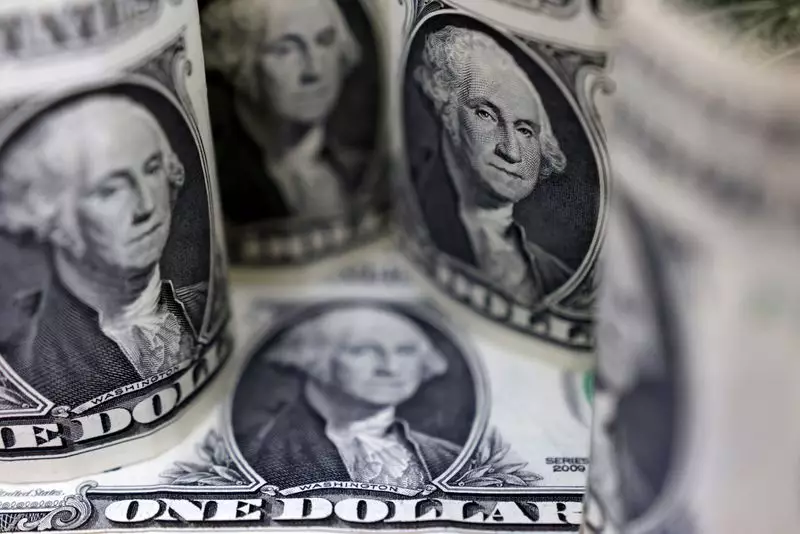Examining the Future of the US Dollar: Trends and Predictions

The US dollar has long been regarded as a global benchmark of strength and stability. However, recent forecasts indicate that it may be facing a turbulent period ahead. Despite a temporary uplift due to unexpectedly strong economic indicators, analysts at UBS caution that various macroeconomic factors could result in sustained downward pressure on the dollar. These developments warrant a closer examination, particularly as they may affect global markets, investment strategies, and economic policies.
Recent Economic Data: A Brief Respite?
In a surprising twist, the US dollar saw a momentary increase following the revision of second-quarter GDP growth data. The gross domestic product was adjusted upward from an already positive 2.8% to a robust 3.0% annualized rate, primarily influenced by heightened consumer spending. This boost in consumer activity—revised to a 2.9% annualized rate—provided an initial lift to the dollar amidst a broader backdrop of uncertainty. Nevertheless, experts at UBS argue that this uptick is unlikely to be a sustainable trend. The dollar has already lost approximately 3% over the past month, indicating that underlying pressures remain potent despite temporary gains.
One of the primary catalysts for the anticipated decline of the dollar is the narrowing interest rate differentials. The US Federal Reserve appears poised to implement a series of interest rate cuts, potentially reducing rates by 100 basis points in its remaining meetings through 2024. In contrast, central banks from other developed economies, such as the European Central Bank and the Bank of England, may adopt a more gradual approach to rate adjustments. This disparity could diminish the dollar’s attractiveness to investors, leading to a shift in capital flows towards currencies with more favorable yield prospects.
As the Federal Reserve continues to navigate its monetary policy strategy, the implications for the dollar could be considerable. Investors typically gravitate towards currencies that offer higher returns, and should other central banks maintain steadier rates, the dollar could witness diminished demand.
The Impact of the US Fiscal Deficit
Beyond interest rates, concerns regarding the expanding US fiscal deficit are also expected to play a significant role in shaping the dollar’s future. The Congressional Budget Office has revealed alarming projections indicating that interest costs on US debt may exceed defense spending as early as this year. These developments could heighten investor anxiety, raising questions about the sustainability of US fiscal policy. Notably, as the next presidential election approaches, fiscal deficit discussions may become increasingly contentious, thereby amplifying uncertainties surrounding the dollar’s value.
Moreover, as the political landscape evolves, these debates may have direct consequences on both economic policy and investor sentiment. Aspects such as government spending, taxation, and borrowing practices are likely to come under intense scrutiny, further complicating an already precarious situation for the dollar.
The changing dynamics of global monetary policy represent another factor influencing the dollar’s decline. As central banks worldwide recalibrate their approaches, the greenback could be further challenged. For instance, the Reserve Bank of Australia is expected to maintain its policy stance, which may help bolster the Australian dollar against the US currency. Furthermore, the Swiss franc is anticipated to retain its status as a safe haven, particularly as the Swiss National Bank nears the conclusion of its easing strategies.
UBS analysts foresee that the euro, British pound, and Australian dollar will likely strengthen against the US dollar by mid-2025, suggesting a broader shift in currency preferences among global investors. With anticipated exchange rates of EURUSD at 1.16, GBPUSD at 1.38, and AUDUSD at 0.70, the forecast points toward a landscape where the US dollar may lose its former dominance.
Repositioning Investment Strategies
The weakening US dollar poses both challenges and opportunities for investors navigating the finance landscape. As the dollar depreciates, higher-quality risk assets like stocks may become increasingly appealing, especially in an environment marked by the Federal Reserve’s rates cuts. UBS advocates that investors reassess their portfolios, recommending reallocations towards high-quality bonds, particularly those linked to investment-grade corporations. Such adjustments will enable investors to navigate the evolving economic environment, positioning themselves for better-long term returns.
While the US dollar may experience some short-lived positivity from favorable economic data, a confluence of factors—including interest rate changes, growing fiscal deficits, and shifting monetary policies—suggest a prolonged period of weakness lies ahead. As stakeholders in the global economy, it is essential to remain informed and proactive in adjusting investment strategies to adapt to an increasingly complex economic landscape.





